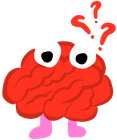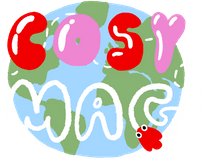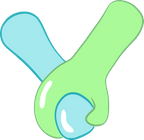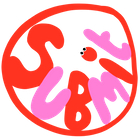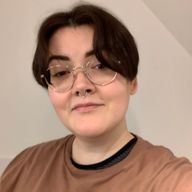Stories like this usually begin with a heartwarming anecdote about a trusted friend steeped in ancient, time-honoured knowledge and wisdom, introducing our naïve protagonist to arcane, occult mysteries. Perhaps they’re at a hushed table in a quiet café, locked behind the window overlooking the street beyond, the air heavy with magic and memories. It could start with a moving tale of someone with a notebook and a pack of tarot cards, seeking a means to gain deeper understanding of themselves amidst a period of profound, seismic personal turmoil.
My story with asexuality and the tarot involves, to a degree, some of these elements. But it actually doesn’t start with any of these narratives.
Instead, my story starts in a dimly lit bar, crowded with cocktails, and people in business dresses, the air heavy with the bassy monotony of electronic dance beats. It was an evening in what we can only now say was in the distant time “before the pandemic," with a friend, a well-worn pack of tarot cards, some alcohol, and a lot of latex.
I was sitting beside someone who I’d known for many years (who I’ll call Rene), clad in a set of religious vestments that, upon closer examination, was actually made out of latex. Rene was there for a public tarot reading event at the bar for what looked like someone’s private event; I’d been invited to come along for the ride. Someone in a fancy dress, or in “business casual” attire, would sit down in front of them. With a mischievous look on Rene’s face and a glimmer in their eye, their hands would flip through the stack of tarot cards at supernatural speed. From the questions they’d ask, the tapestry of that person’s life was laid bare for all to witness. With each card turned over, Rene would tug at the frayed edges of the other person’s anxieties, unravelling them thread by thread, until they’d get to the beating heart at the centre of their true issues. As with all truth-tellers, sometimes my friend’s words were received with respect and earnestness. With others, not so much.
During other moments, I’d witnessed my other spiritually-inclined friends giving each other readings. When I was feeling brave, I’d let them read me with their cards too. The enigmatic symbols on their tarot cards were both familiar, and alien to me: What is a communion chalice from church doing in the Ace of Cups? What are those five people doing with their staves in the Five of Wands? And what happened to those two people hunched over in the Five of Swords? The ambiguity of these scenes would give me a slight rush of creeping fear. I expected something sinister to come out of these pictures, something that was lurking unseen and unnoticed. As I witnessed more reading sessions among my friends, that lurking fear later melted into a hungry curiosity.
A few days later, Rene offered to loan me their used copy of Eden Grey’s Mastering the Tarot. It was a book that looked like it’d lived several lifetimes on a shelf: The edges of the pages were still as sharp as the day they’d been printed, but were so yellowed with time and exposure to sunlight that it almost looked like they’d been written on parchment. I devoured it in the matter of a few weeks, reading and rereading it, filling a notebook with my copious notes on the personalities, themes, symbolism, and keywords of the Major and Minor Arcana. Not long after that, Rene took me on a long walk up towards a tarot and metaphysical shop tucked away in quiet corner of our city, so I could get my first tarot deck (The Fountain, by Jonathan Saiz, Jason Gruhl, and Andi Todaro). I bought my second deck a few weeks after that (The Linestrider Tarot, by Siolo Thompson). I was hooked.
Still reeling from the aftermath of two failed relationships, I was desperate to understand what had happened. Why things went the way they did, and why I did the things that I’d done, in some quest to ensure that I’d never do what I’d done ever again. I’d hurt and lied to people I’d loved; I’d also given others that I thought I loved the boundary-free reign to grievously hurt me as many times as they wanted. These were things that I hadn’t imagined myself ever doing to the people in my life. I needed, in words I’d later tell my therapist, to try to make up an exploded diagram of my self and my relationships, to figure out how all of their constituent bits and pieces fit and worked together, so I could fix what I thought was broken. In the process, I both discovered and rediscovered parts of myself that I’d repressed and ignored. In addition to seeking guidance and insight from a mental health professional, a lot of meditation, journaling, and long walks spent alone... tarot was a constant part of that process.
Queerness, Asexuality, and The Tarot
The tarot in its many forms – from the medieval Tarot de Marseille, to the illustrated 1909 Rider-Waite-Smith deck, to the striking post-war Thoth deck – is often associated with knowledge and spirituality that runs counter to mainstream religion. Given how it has historically occupied a misunderstood realm at the margins of society, it only makes sense that queer people both have gravitated, and continue to gravitate, to the tarot as a vehicle to develop spiritual meaning, and both emotional and psychological self-understanding. The 78 cards of tarot, then, represent a safe space for queer people to mentally and emotionally heal and express themselves. It is a place for queer people to explore who they are, free from the shame, guilt, and doubt that can be so prevalent in other spheres of their lives. It is a spiritual arena safely removed from the external, marginalizing messages of society at large.
Aspec people – those identifying under the asexual spectrum (ace) and/or aromantic spectrum (aro) – are certainly no exception. A great deal of the mainstream discourse surrounding asexuality and aromanticism frequently marginalises their sexual identity and experiences — and that's if they’re not being trivialised as “spicy straights”, just being “picky”, or “a prude”. For aces and aros, the tarot presents a counter-cultural method of personal development, spiritual exploration, and self-examination that doesn’t purely centre itself around sexual or romantic normativity. It is a truly spacious exercise: a space that exists for you to fill, with your own questions, your own insights, and ultimately, your own answers, free from external assumptions and restrictive norms. Cards then, like the The Lovers or the Two of Cups – popularly associated with cisheteronormative paired dating relationships and sexuality – can take on meanings that can be genuinely resonant and empowering for people who often find themselves alienated from sex, dating, and relationships.
In those first few months after that night with Rene, I’d adopted a regular Sunday routine. I'd attend an early morning Eucharist service at the queer-affirming United Church and then go for a modest breakfast of coffee and over-sweetened bread at a downtown café, where I’d adopt a quiet cubicle as my impromptu tarot and writing studio. While baggy-eyed students studied for exams on their equally tired laptops, the air around my table thickened with the memory of past relationships and the energy of curiosity.
I drew and laid out cards in increasingly elaborate spreads to trace out a map to my own murky inner world. Before I knew it, pages and pages of my notebook would be filled with writing about the cards, their imagery, and their links to the maelstrom of emotions bubbling in my head. With spiderweb delicacy, their visual language branched out into the ebbs and flows of my own life and sexuality. Patterns that had long been clouded started to come into sharper focus: My capacity for same-sex attraction, assumed to be an emotional misfiring in high school; how so much of the asexual experience resonated with me, lining up with my emotions and feelings like many boxes being ticked off on an endless checklist in my head; how despite all of that, I still noticed my sexual attractions pulling me towards people who had a very specific connected place in my life.
I feel like I couldn’t have truly come to discover and appreciate either my biromanticism, or my own place on the asexual spectrum without the tarot. In the absence of my Christian background’s ability to help me understand my sexual identity, tarot and the social possibilities it opened up helped me to see myself as ace in a way that nothing else truly could.
Perhaps it’s no coincidence then that the tarot-slinging friend, who left me spellbound with the speed of their cartomantic skillset, also identified as asexual. Through them I was introduced to both the world of asexuality, and to the world of the tarot. Since then, I’ve had the pleasure of meeting other ace- and aro-identified tarot readers in my online communities, and the tarot has continued to be a source of illumination in my journeys in the asexual spectrum. For those embarking on their own journey into asexuality and queerness, I hope it comes to be as joyous a tool for your own path as it has been for mine.

